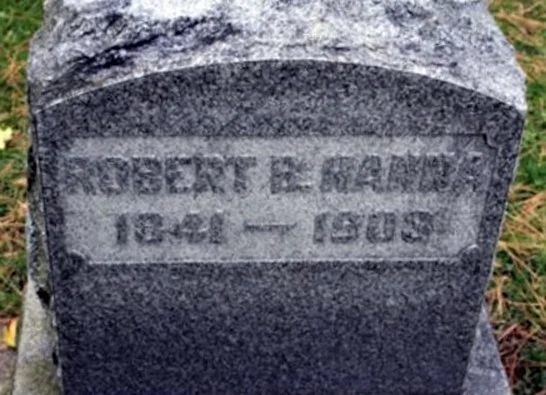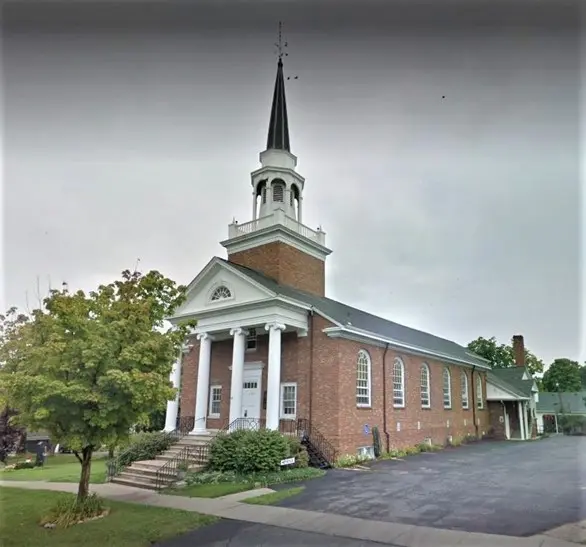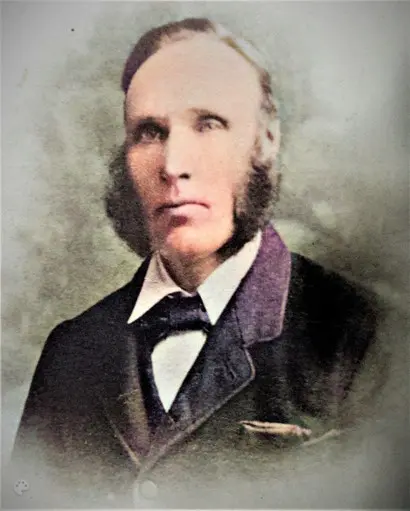Tracing Your Irish Roots – Gearing Up For Irish Research

The last three hundred years has witnessed extensive Irish immigration to all corners of the globe. Close to 80 million people who claim Irish roots or affiliation are connected in a vibrant community of shared cultural identity and heritage. This network of Irish descendents is an important part of Ireland’s ongoing tale. No wonder so many people journey to Ireland to connect to their past and become a part of that country’s story. Searching for your Irish ancestors is fun, exciting, and gratifying. Experiencing your Irish heritage within the context of your ancestors is unmatched.
This is the third post in a blog series authored by Melanie Nelson, US-based professional genealogist and founder of MelNel Genealogy. Follow her here as she reveals the story of her Irish ancestors and provides helpful Irish research tips and tricks along the way. You can read her blog post Luck of the Irish describing her initial discovery of an Irish line in her family tree.
Gearing Up for Irish Research
My video gaming career began with Atari’s first best-seller Pong, a digital ping-pong game with a simple two-dimensional interface controlled by a dial rather than a stick. A few years later I became the family champion of Pac-Man and Space Invaders. That’s as far as I got. Until I challenged my nephew Zach to a game on his first Wii one Christmas. Of course he had already gone through the Game Boy and Nintendo phase, both of which I missed as I was taking life too seriously. His gaming experience far exceeded the rusty skills I had honed a generation before.
As our avatars ran through a medieval maze of bad guys in search of magical relics I became rather frustrated. Zach seemed to know rules that I didn’t. Not to be outdone by a ten year-old, I quizzed him in an exchange that went something like this:
Me: “How did you know to look behind that door for a key?”
Zach: “It’s really easy. It’s like that in my other games.”Me: “Well, since I don’t play other games, maybe you can give me some clues?”
Zach (eyes rolling impatiently): “They ALWAYS put a weapon under a rock, food in a cabinet, and keys hanging behind a door.”Me: “Do I want to collect all of those things?”
Zach: “You need to be fully geared up to slay the dragon.”
Tracing Irish ancestors is similar to Zach’s video game. As genealogists engage different riddles and challenges they are rewarded with critical bits of evidence that help them successfully navigate the labyrinth of Irish research.
Let’s Play: Assembling the U.S. Research Plan
After learning my great-great-grandparents were born in Ireland and immigrated to New York at some point in the late 1800s, I was biting at the bit to dive directly into Irish records. However, I knew Irish genealogy research is fraught with unique obstacles such as record loss, ambiguous land boundaries, and puzzling naming practices (discussed in Untangling the Trinity Knot in Ancestry Research). I needed a plan specifically designed to elicit the crucial information from U.S. records that enabled me to face the dragon of Ireland’s limited record sets. Just like Zach knew to check under stones, in cupboards, and behind doors for his survival equipment, my approach had to probe the right sources for essential evidence about my ancestors:
- Birth dates and locations
- Religion
- Family, friends, associates and neighbors
I had only one initial clue at game launch: a U.S. marriage license for my great-grandparents Charles Rainer and Margaret Hanna who married in Avon, New York, in 1909 (Image 1). Margaret’s parents were briefly listed as Robert Hanna and Margaret Watson both born in Ireland. Since Margaret Hanna was born in New York, I suspected her parents had immigrated from Ireland, therefore placing some of their records in the U.S.
I made my first tactical decision to focus my effort on rounding out Robert’s identity. The research objective simply read: Determine the birth year, Irish county of origin, religious affiliation, and names of siblings and children for Robert Hanna.

Power Up: Birth Date and Location
In his video game Zach sought the bright shiny object first – a sword bedazzled by jewels nested in the hilt. When I questioned his tactic, he explained that a swinging blade protected him from enemies while he searched for other objects.
Similarly, the most effective weapon in Irish research is evidence of an ancestor’s birth date and location. Although few Irish immigrants knew their actual birth dates, an approximate year would place an ancestor on a timeline. Perhaps more importantly, his Irish county of origin would single out the locality for investigation.
Unfortunately the birth county for many Irish was not collected in formal U.S. records. County-level information was unnecessary. Although U.S. census and vital record forms frequently documented birth places, immigrants were often merely designated by country. Instead, burial records, obituaries, and military draft cards serve as indispensable resources to review.
Working backward from more recent records, I hit the jackpot immediately. As I expected I found Robert buried a few plots over from his daughter in Temple Hill Cemetery, Geneseo, New York (Image 2). His burial record powered up my research. Robert B. Hanna was born in 1841 in County Antrim, Ireland.2 I picked up the bonus nugget, his middle initial “B,” further differentiating him from other Robert Hannas that I’d surely encounter along my odyssey.

Booster Pack: Religion
Zach’s food parcel stowed in a concealed cupboard sustained his video character’s energy. Discovering an Irish ancestor’s religious affiliation in U.S. records likewise boosts the research process. Church of Ireland records were destroyed in the Dublin Public Records Office fire of 1922, but records from other denominations survive. While county of origin targets locality records in Ireland’s collections, religious preference suggests the specific church records to research in that locality.
Helpful U.S. sources to discover an ancestor’s affiliation include obituaries, marriage records, and children’s birth records. Additionally, church records from the ancestor’s U.S. locality may then corroborate his or her membership in the congregation or involvement in associated activities.
Robert’s obituary provided the pivotal clue. He was laid to rest on a cool Monday afternoon as upstate New York emerged from the damp winter of 1903.4 Reverend Dr. Josia E. Kittredge officiated the funeral and led a mile-long solemn procession to Temple Hill Cemetery.5 Robert was described as “a man of fine Christian qualities, a constant church-goer and a man of excellent domestic habits.”6 A simple Google search found Kittredge was a pastor at the Central Presbyterian Church in Geneseo (Image 3). Furthermore, Kittredge’s predecessor Reverend Dr. Ferdinand DeWilton Ward had married Robert and his wife Margaret Watson almost twenty years prior.7 Now with sufficient evidence indicating Robert was Presbyterian, a future research plan in Ireland could target Presbyterian church records.

Level Complete: Family Members
Zach’s video game required the player to insert an enchanted key into a door lock to reveal the next level of play. Exploration of family members, particularly siblings and children, who have or are mentioned in U.S. records, can likewise move research to the next level.
The Irish carried the same names across and within generations. Oftentimes the only way to differentiate Roberts and Margarets is to reconstruct their family circle. For example, a brother’s gravestone etching may divulge an all-important birth county or a daughter’s baptism may suggest a Catholic affiliation. U.S. sources that may expose the powerful key are census and probate records.
Since Robert died in New York in 1903, I found him mentioned in the previous 1900 U.S. census.9 Robert and Margaret, already married fifteen years, lived with their family of six in Geneseo. Important details caught my eye. Margaret immigrated to the U.S. three years earlier than Robert suggesting they met in the U.S. She birthed five children, not the six noted out of sequence in the family. The last annotated child was the oldest daughter, 28-year-old Sarah who had been born in Ireland. At age 35 Margaret was clearly not Sarah’s mother.
Robert’s probate record shed additional light (Image 4). A long roster of people stood to benefit from his death. At least three brothers and ten children were named in the final settlement. Moreover, Robert’s obituary alluded to a first wife who died in Ireland. Investigation of these people would now be added to the research plan for exploring Robert’s life and ancestors in the homeland.

Game Over: The Irish Passport
My experience observing Zach play his video game reinforced the idea that each successful quest begins with a proven methodology. No matter the country, the first steps to launch the genealogy research process are the same: define the objective, learn about the ancestor’s locality, and prioritize likely sources. Ireland’s unique context, however, requires a U.S. researcher to arrive with a county, a religion, and a lineup of family members.
With the information I located in U.S. records, I formulated my ancestor’s narrative. Robert Brittain Hanna was born in the Ballymena area of County Antrim, Ireland, in 1841 (Image 5).11 He and his first wife (unknown) had seven children (including Jane, Mary, James, Lizzy, Sarah) before she died in 1880.12 Like his four brothers (James, William, John, Samuel), Robert and several children immigrated to Livingston County, New York, in about 1885.13 He quickly met and married his second wife Margaret Watson in the same year.14 Together they raised Robert’s second family (Robert, Margaret, Anna, Lily, Agnes) on their farm and attended the local Presbyterian church in Geneseo.15 A modest farmer for the duration of his life, Robert died at his Geneseo home on 9 May 1903 after a series of strokes and rests in Temple Hill Cemetery.16
Game over!

Tips to Prepare for Irish Research
1. Start with what you know. Work backward in a deliberate process from death to birth.
2. Focus efforts on identifying your ancestor’s home county, religion, and family members.
3. Find as much as you can in U.S. records before researching Irish collections.
4. Make a timeline tracking your ancestor’s movements and activities in the U.S.
5. Explore the U.S. records for your ancestor’s family, friends, associates, and neighbors.
6. Cite your sources and the information found in them.
7. Develop hypotheses to investigate once you’re ready for Ireland.
In my next post, I’ll break down the steps I took to continue my Robert Brittain Hanna research in Ireland.
Your Journey into Your Past Starts Here
Whether you’re beginning your family history research or are ready to hop the pond, it’s your time to feel the myth and magic of the Emerald Isle. Contact MelNel Genealogy or Kerry Experience Tours to find out more about our joint offering Ireland Heritage Travel that weaves your ancestral search with a wonderful travel experience!
OTHER BLOGS IN THE SERIES “TRACING YOUR IRISH ROOTS"
End Notes
1 Livingston County, New York, Affidavit for License to Marry for Charles W. Rainer and Margaret Hanna, 12 October 1909; digital image, “New York, U.S., County Marriage Records, 1847-1849, 1907-1936,” Ancestry.com (https://www.ancestry.com : accessed 16 September 2021).
2 “Interment Database,” Temple Hill Cemetery (http://www.templehillcemetery.com/index.asp / accessed 16 September 2021), entry for Robert B. Hanna (1841-1903). The information in this database is obtained from handwritten records kept at Temple Hill since 1807. The database may contain inaccuracies or incomplete information.
3 Ibid.
4 “Robert Hanna” obituary, Livingston Republican (Geneseo, New York), 14 May 1903, p. 3, col. 6; image copy, NYS Historic Newspapers (https://nyshistoricnewspapers.org/lccn/sn83031327/1903-05-14/ed-1/seq-3/ : viewed 16 September 2021).
5 Ibid.
6 Ibid.
7 “Married” Hanna-Watson announcement, Livingston Republican (Geneseo, New York), 4 December 1884, p. 3, col. unk; image copy, NYS Historic Newspapers (https://nyshistoricnewspapers.org/lccn/sn83031327/1903-05-14/ed-1/seq-3/ : viewed 16 September 2021).
8 Google StreetView (https://www.google.com/streetview), Central Presbyterian Church, 33 Center Street, Geneseo, New York, image capture September 2018.
9 1900 U.S. census, Livingston County, New York, population schedule, Geneseo, enumeration district (ED) 23, sheet 79A (stamped), dwelling 229, family 233, Robert B. Hanna family; digital image, Ancestry.com (http://www.ancestry.com : viewed 16 September 2021); citing NARA microfilm publication T623, roll 1854.
10 Surrogate’s Court, Livingston County, New York, “Orders and Decrees Final Settlement Administrator, Vol. 47,” entry 168, estate of Robert B. Hanna, 29 February 1904; digital image, “New York, U.S., Wills and Probate Records, 1659-1999,” Ancestry.com (https://www.ancestry.com : accessed 16 September 2021).
11 “Interment Database,” Temple Hill Cemetery, entry for Robert B. Hanna (1841-1903). Also, Livingston County, New York, Marriage Records, register no. 1253, entry for George Herbert Orman and Lillian Mae Hanna, 20 February 1913; digital image, “New York, U.S., County Marriage Records, 1847-1849, 1907-1936,” Ancestry.com (https://www.ancestry.com : accessed 16 September 2021). Robert Hanna’s middle name is noted as Brittian.
12 “Robert Hanna” obituary, Livingston Republican (Geneseo, NY), 14 May 1903, p. 3, col. 6. Also, Surrogate’s Court, Livingston Co., NY, “Orders and Decrees Final Settlement Administrator, Vol. 47,” entry 168, estate of Robert B. Hanna, 29 Feb 1904.
13 Ibid. Also, 1900 U.S. census, Livingston Co., NY, pop. sch., Geneseo, ED 23, sheet 79A (stamped), dwell. 229, fam. 233, Robert B. Hanna family.
14 “Married” Hanna-Watson announcement, Livingston Republican (Geneseo, NY), 4 Dec 1884, p. 3, col. unk.
15 “Robert Hanna” obituary, Livingston Republican (Geneseo, NY), 14 May 1903, p. 3, col. 6. Also, 1900 U.S. census, Livingston Co., NY, pop. sch., Geneseo, ED 23, sheet 79A (stamped), dwell. 229, fam. 233, Robert B. Hanna family.
16 Ibid.
17 “Shilling Family Tree 2013,” owned by Margaret Burgess, Ancestry.com (http://www.ancestry.com : viewed 16 September 2012). Original image titled Robert B. Hanna. Cropped and edited by Melanie Nelson.

